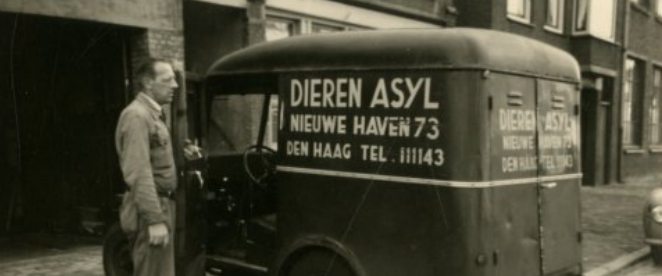
Geschiedenis Haags Dierencentrum
Ancest animal shelter in the Netherlands
We would like to take you through the history of our animal shelter. In 1877, Mrs. van Manen-Thesing and five well-to-do ladies founded the “Vereeniging Nederlandsch Toevluchtsoord voor Noodlijdende Dieren. Located at Bagijnestraat 31, the first animal shelter for stray dogs and cats in the Netherlands was a fact.
Moving to the Ammunitiehaven
Soon there was a lack of space and Mrs. and Mr. van Manen bought a property on the Ammunitiehaven. They donated it to the association. It was repeatedly necessary to expand or reorganize building and grounds.
In addition to the shelter also a boarding house
In 1890 ‘boarding cats’ and ‘boarding dogs’ were also taken in for a fee. And in 1893, on a newly purchased piece of land, a special department was set up for the care of cats. A rate of 15 cents per day or one guilder per week was established for the care of cats.
In 1905, an exchange of land made it possible to move into the larger building at 73 New Haven. This was in use until 1981. The building still bears the name “Dierenasijl” in beautiful letters.
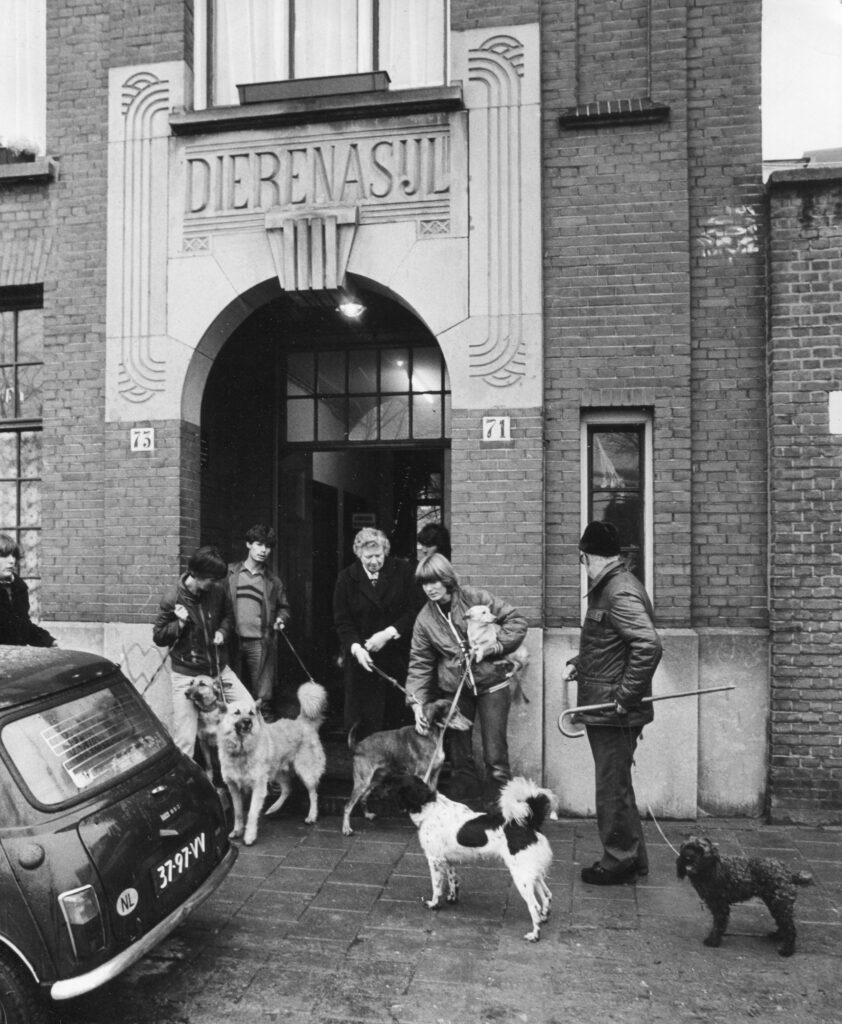
An in-house clinic
An amazing development was the establishment of an in-house veterinary clinic in 1910. Veterinarian Hoogland worked here for 45 years! (from 1925 to 1971). Even today, the presence of an in-house animal clinic in a shelter is very special.
For the transport of sick or wounded animals a bus was purchased, which was again an improvement over the cart on pneumatic tires used until now.
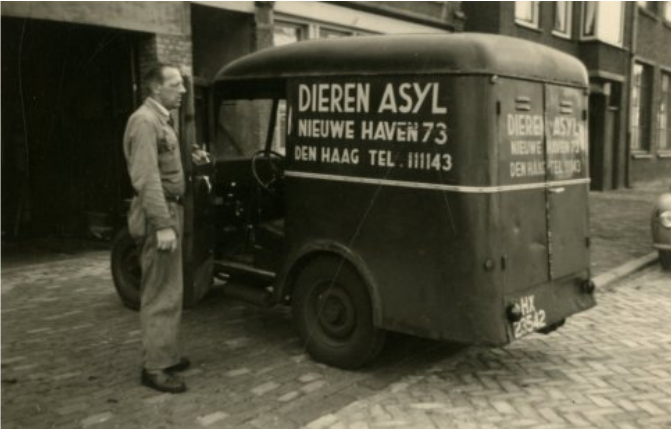
World War II 1940 – 1945
Food and heat supplies are scarce. Also, the occupying forces requisition the shelter van. The royal family’s dog “Billy” was placed in the shelter. After his stay, the shelter receives a letter of thanks from the temporary intendant of the Prince’s wing of Soestdijk Palace.
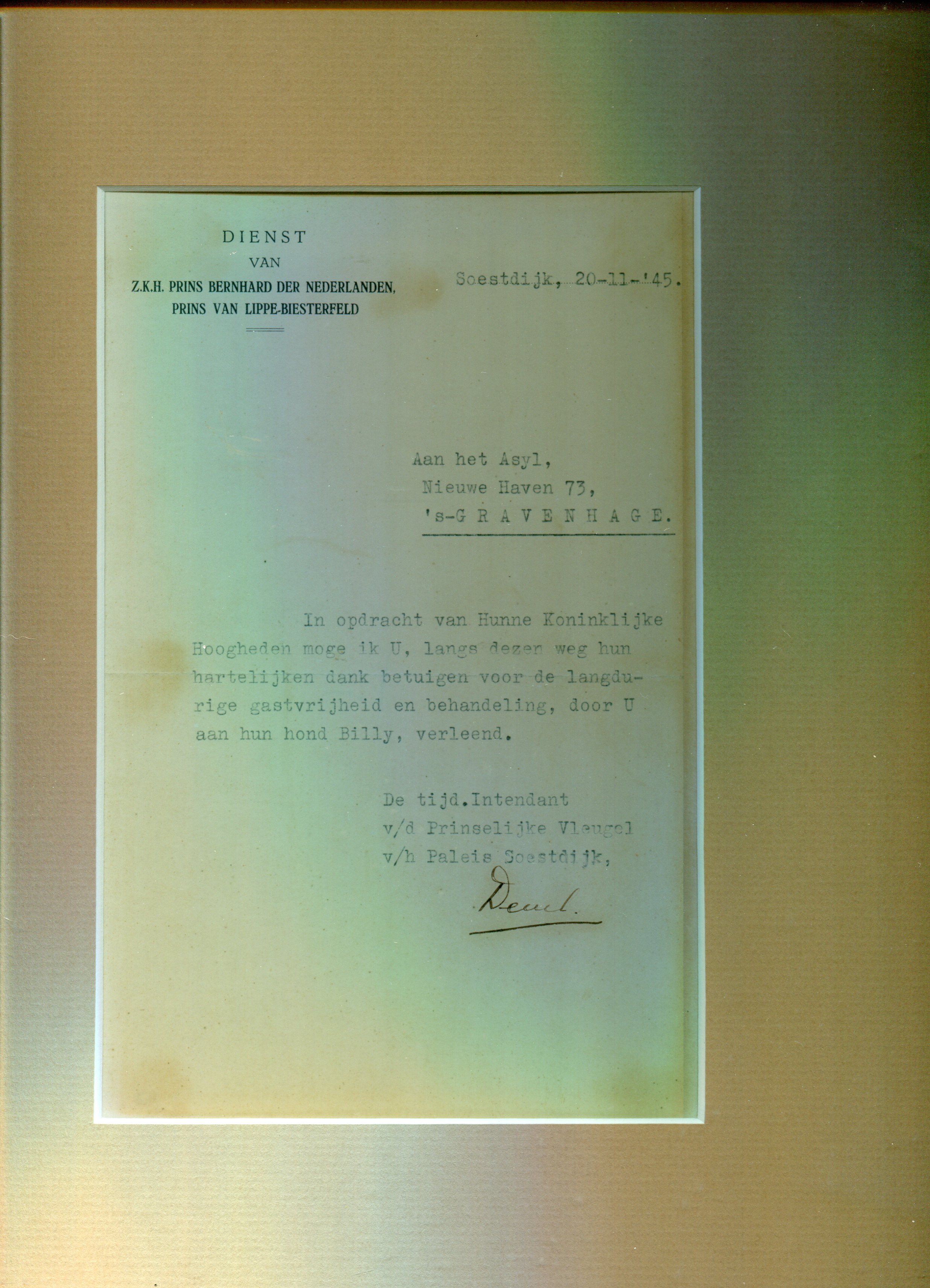
Municipality of The Hague and The Hague Animal Center Foundation
In 1965, the legal provision came into effect that a stray animal must stay at the shelter for 14 days after entry, in order to give the owner a chance to come get the animal. The municipality of The Hague initially reimbursed only 7 days of this.
The name ‘Hague Animal Center Foundation’ came into being in 1970, when the Vereeniging Nederlandsch Toevluchtsoord voor Noodlijdende Dieren’ and the Dierenbescherming department The Hague decided to enter into cooperation.
In 2014, the cooperation with the Dierenbescherming ended permanently.
Move Schenkkade and Lozerlaan 1980 – 1992
In 1980 a new building was moved into on the Schenkkade. This location was festively opened by the then Queen Beatrix.
Due to economic interests of the municipality (developing a central office location), the HDC was moved to Lozerlaan, its current location, in December 1992.
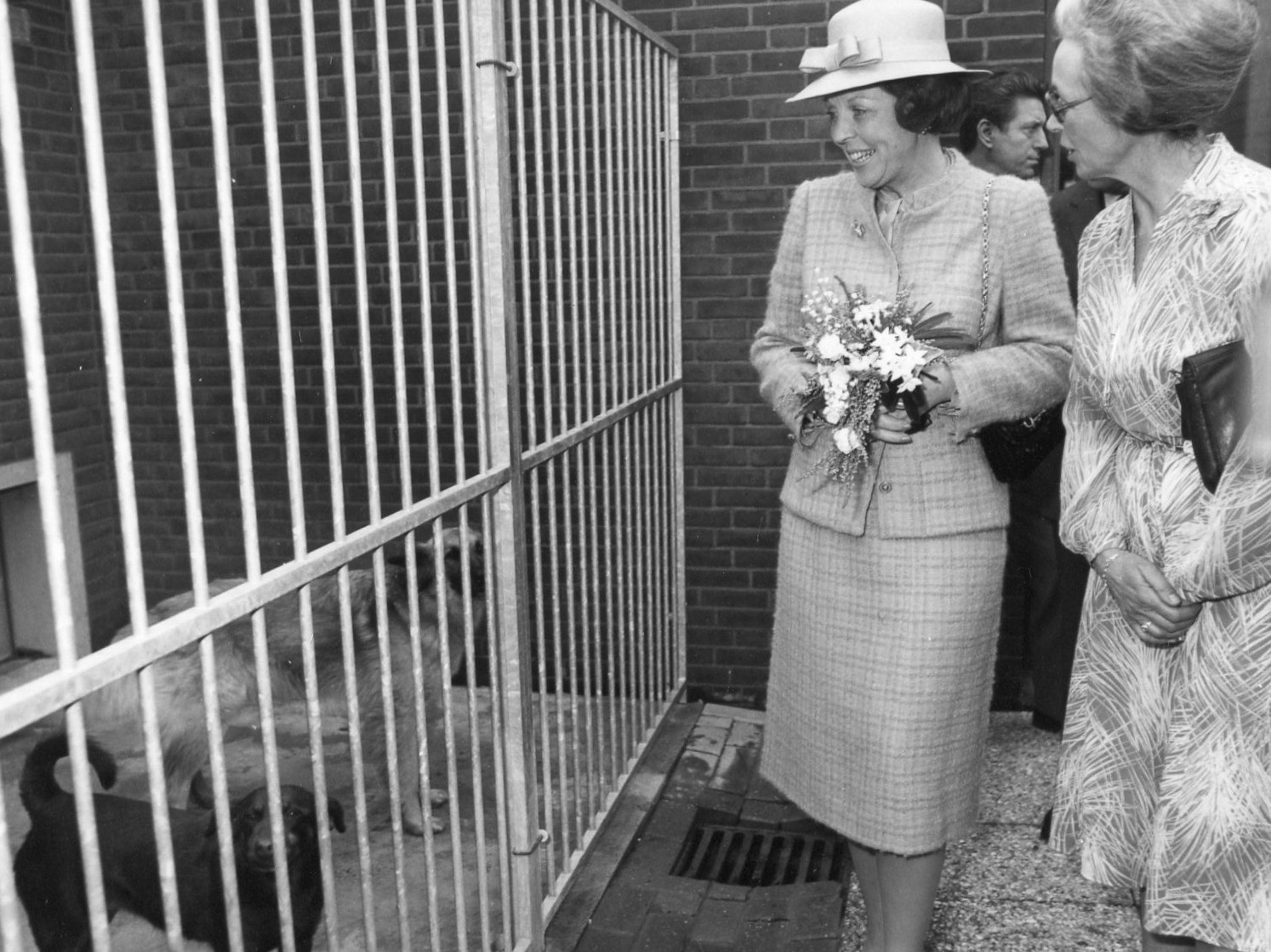
Where are we now…
By 2020, with 23 permanent staff and some 150 volunteers, we will be on duty 7 days a week to provide safe and loving shelter for stray and abandoned animals from The Hague. On average some 1,700 dogs and cats a year.
Internal clinic
Our internal clinic is staffed by 2 veterinarians, 2 assistants and a number of regular volunteers and is equipped with modern equipment, mostly donated by donors and equity funds. Almost all surgeries are performed here.
Pension
The cats stay in cozy rooms and the dogs have their own kennel with outlet. During the stay, we check for a nice dog buddy for a dog so they can play together on the patio.
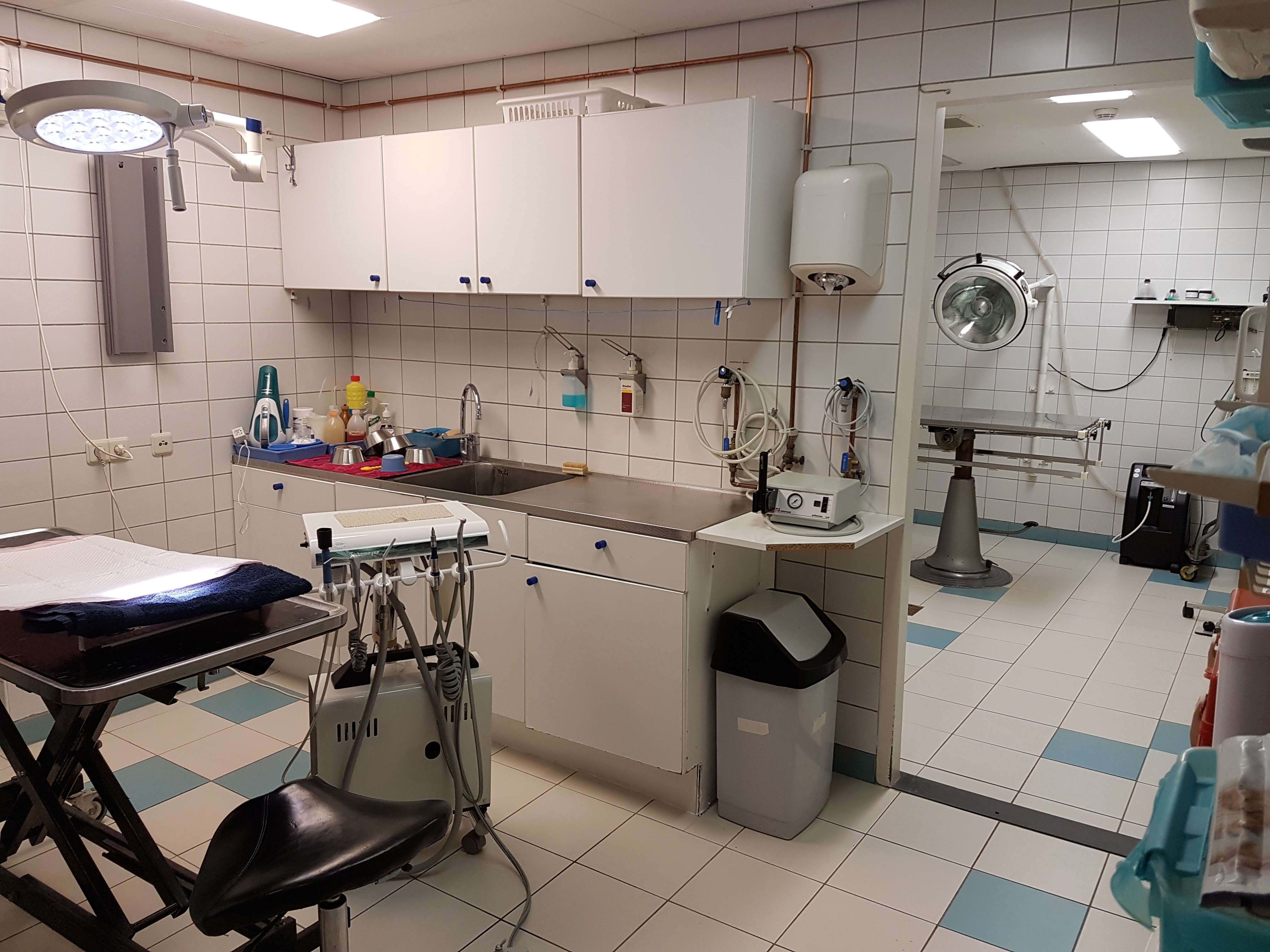
Animal welfare
Animal welfare is paramount at the Hague Animal Center. This is reflected in the daily care and rehoming policy. But also in the attention we pay to improving behavior.
All dog and cat handlers have the diploma of behaviorist or are in training for it. This way, even the increasing number of incoming dogs with behavioral problems have a chance at a future. This also applies to the very frightened cats or cats showing unwanted behavior. It goes without saying that a medical cause of this is first ruled out.
When teaching desired behavior, we do not work with correctional materials. These cause pain and stress to the dogs and do not achieve the desired effect, on the contrary! In contrast, rewarding good behavior produces long-term results.
We work together with kynological center Quiebus.
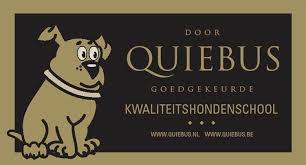
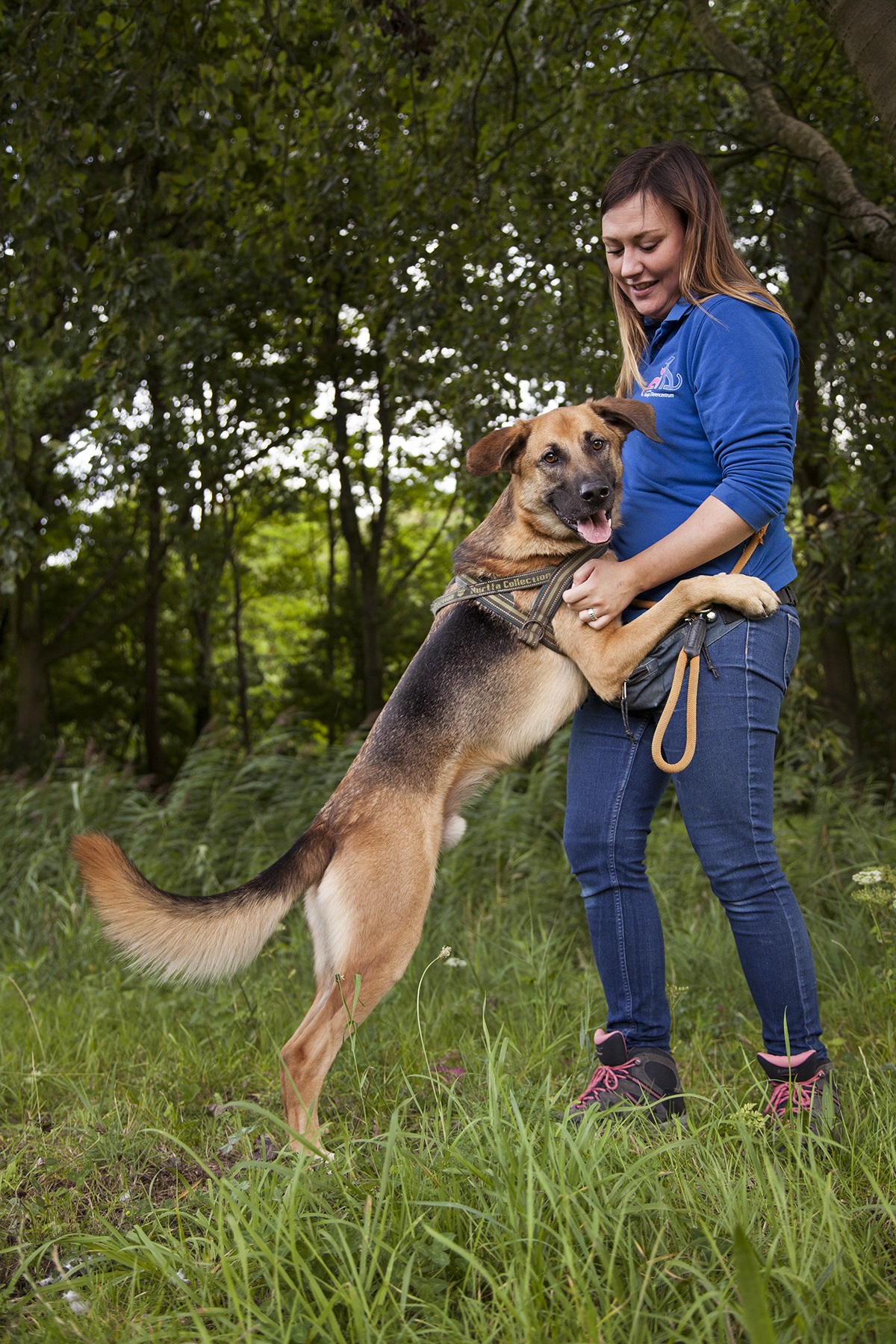
Donors, sponsors, inheritances and bequests
Donors, sponsors, inheritances and bequests ensure that we make it all come together financially, although in 2012 the situation was worrisome and we were on the verge of bankruptcy.
In closing
Of course, we have come this far in recent years because of the efforts of our staff, but volunteers have also contributed and continue to do so today, in many ways.
We are proud of what we can do today, thanks to the ladies who founded our organization in 1877, for the dogs and cats without owners. Improvement is always our goal. Thank you for the past years and keep helping us!

